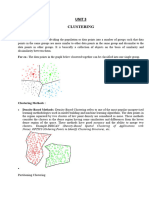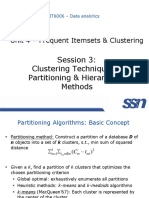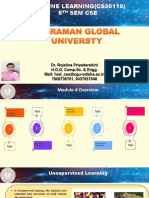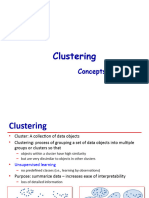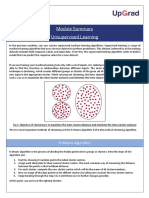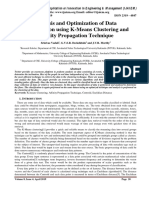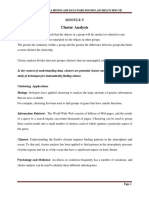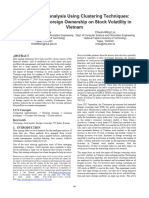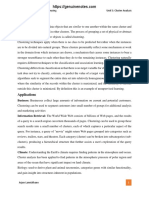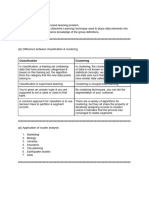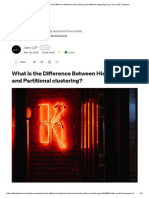0% found this document useful (0 votes)
10 views20 pagesUnit 4 Cluster Analysis 3
The document discusses cluster analysis, focusing on partitioning and hierarchical methods for grouping similar data objects. It explains techniques like K-means, K-medoids, and CLARA for efficient clustering, as well as agglomerative and divisive hierarchical clustering methods. The document highlights applications, advantages, and drawbacks of these clustering techniques, providing examples for better understanding.
Uploaded by
drajalakshmi2004Copyright
© © All Rights Reserved
We take content rights seriously. If you suspect this is your content, claim it here.
Available Formats
Download as PDF, TXT or read online on Scribd
0% found this document useful (0 votes)
10 views20 pagesUnit 4 Cluster Analysis 3
The document discusses cluster analysis, focusing on partitioning and hierarchical methods for grouping similar data objects. It explains techniques like K-means, K-medoids, and CLARA for efficient clustering, as well as agglomerative and divisive hierarchical clustering methods. The document highlights applications, advantages, and drawbacks of these clustering techniques, providing examples for better understanding.
Uploaded by
drajalakshmi2004Copyright
© © All Rights Reserved
We take content rights seriously. If you suspect this is your content, claim it here.
Available Formats
Download as PDF, TXT or read online on Scribd
/ 20

















